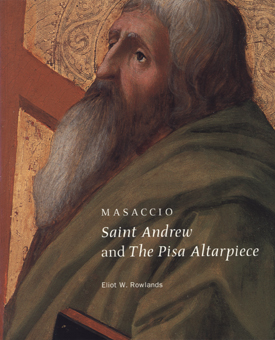
GETTY COLLECTIONS
Masaccio: Saint Andrew and The Pisa Altarpiece
Eliot W. Rowlands
2003
118 pages
PDF file size: 9.90 MB
Description
Ranked by many scholars as the greatest master of early Italian Renaissance painting, Masaccio (1401–1428) was the first artist to use light effects to create three-dimensional images on a two-dimensional plane. This achievement, revolutionary in Masaccio’s day, is one of the painter’s significant contributions to art history.
This volume explores Masaccio’s accomplishment as epitomized by the altarpiece of which the Saint Andrew panel once formed a part: The Pisa Altarpiece, one of the truly great polyptychs, or multipaneled paintings, in the history of Italian Renaissance art. It was produced for a chapel in the church of Santa Maria del Carmine in Pisa in 1426. The book also discusses Masaccio’s short life and illustrious career; the commission for the altarpiece; its patron and program; the painting’s original location; and the role church friars played in the actual commission. Finally, after examining the polyptych’s various panels, it traces their later history and recounts how art historians came to identify them.
Masaccio: Saint Andrew and The Pisa Altarpiece is part of the Getty Museum Studies on Art series, which is designed to introduce individual artworks or small groups of related works to a broad public with an interest in the history of art.
Each monograph is written by a leading scholar and features a close discussion of its subject as well as a detailed analysis of the broader historical and cultural context in which the work was created.
Table of Contents
- Introduction
- Masaccio’s Life and Work
- Masaccio’s Pisa Altarpiece
- Ser Giuliano and the Carmelites: The Patronage of the Altarpiece
- The Later History of the Altarpiece
- Notes
- Acknowledgments
About the Authors
Eliot W. Rowlands is a senior researcher at Wildenstein and Company, Inc., in New York. He is the author of numerous art-historical publications, including The Collections of the Nelson-Atkins Museum of Art I: Italian Painting, 1300–1800, as well as critical articles in Paragone, Apollo, Gazette des Beaux-Arts, and Burlington Magazine.